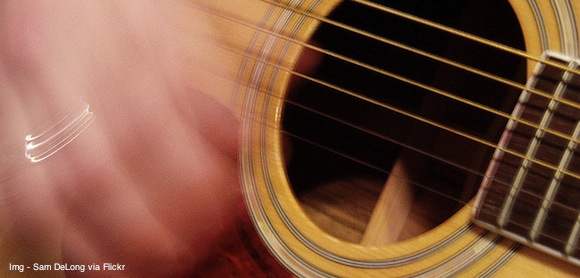
When a student has an instrument in their hands, they want to use it. However, making “unwanted” sound can be distracting, slow down a class, and if I hear the lick from “Sweet Child of Mine” one more time, I’m gonna…..
It’s important to take noodling in stride, but it’s also important to put an end to it quickly. That’s why we put together the ultimate guide to ending noodling in your classroom guitar program. If you ask a bunch of people the same question, you’ll get a bunch of different answers. Here’s what our experts had to say about noodling.
Bill Swick, head of the NAfME Guitar Council, says that, “Teaching and giving instruction is ineffective if students are talking and/or playing when instruction is being given”.
If you’ve got kids playing while you’re talking, you’ve lost control of the class. Countering noodling must be something ingrained in the culture of your guitar class. Establish the rules at the beginning of the school year and adhere to them everyday with consequences that get more severe for multiple infractions. Read more about Bill’s Noodling Philosophy.
Bill Burke, of the Teaching Guitar Workshops, agrees that the one rule to establish in your guitar class right away is “NO NOODLING!”. But, how do make it more than just lip service?
1. Explain to your guitar students what noodling is and why it occurs.
2. Explain why it is distracting: Other students may not hear your instructions; you have to repeat yourself; the class is slowing down, you’re tearing your hair out, etc.
3. Teach two commands to deal with the noodling and create silence:
a. “Hands Down” – Student fold their hands together and then put the hands on the upper part of the guitar body. Now you can deliver instruction in a quiet classroom. Inevitably someone doesn’t hear the ‘Hands Down’ command and you have to take it to a new level.
b. “Face Down” – Students roll the guitar forward in their lap so the face of the guitar with the strings is now resting on their legs. Ahhhhhh…….silence ensues…….
A bonus for this method is that the back of the guitar works well as a desk; just be sure that students place a book or magazine between their papers and the back of the guitar. Read more on Bill Burke’s philosophy.
Glen McCarthy, of the Teaching Guitar Workshops, has a method called “hands”. Glen calls it that because it involves your hands and it’s better than telling your kids to shut up. “Hands” is an effective way to stop noodling and when you train your class to do “hands” it becomes systematic.
Here’s how it goes:
1. With the waist of the guitar resting on your leg, raise your left hand
2. Raise your right hand.
3. Intertwine your fingers and place them on the shoulder of your guitar.
Matt Gerry, our favorite guitar teacher from Salina, KS, sympathizes; it’s hard to keep your hands off something you love. Stopping noodling walks a fine line; you don’t want to discourage playing, but there’s a time for everything. Try these tactics:
1. The Quiet Signal – Play an E chord in a rhythmic pattern of 4 sixteenths followed by a quarter note. When the students hear that pattern they are to stop playing immediately and listen for instructions. Be sure to reinforce it with rewards and consequences.
2. Pace – One of the best ways to keep noodling at bay is solid lesson plan. If the class is moving at a good pace they won’t have time to noodle. Unfortunately every class will have down moments, so the Pace method won’t work in a bubble.
3. Wait ‘em out – This it the old tried and true method of teaching where you don’t move on until you have compliance. Try on these phrases:
– “We’ll start as soon as it’s totally quiet.”
– “I’ll wait on you.”
– “As soon as you’re ready, I’m ready.”
Read more about Matt’s philosophy.
